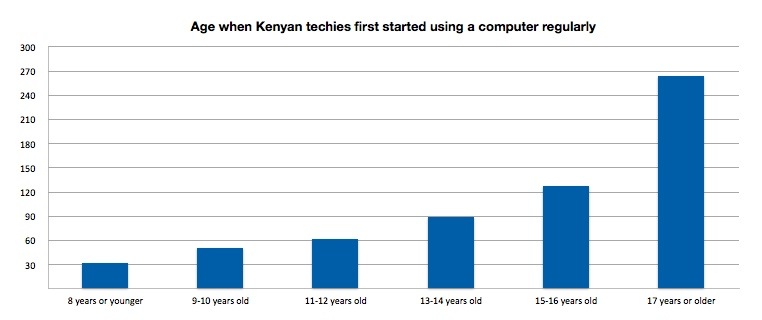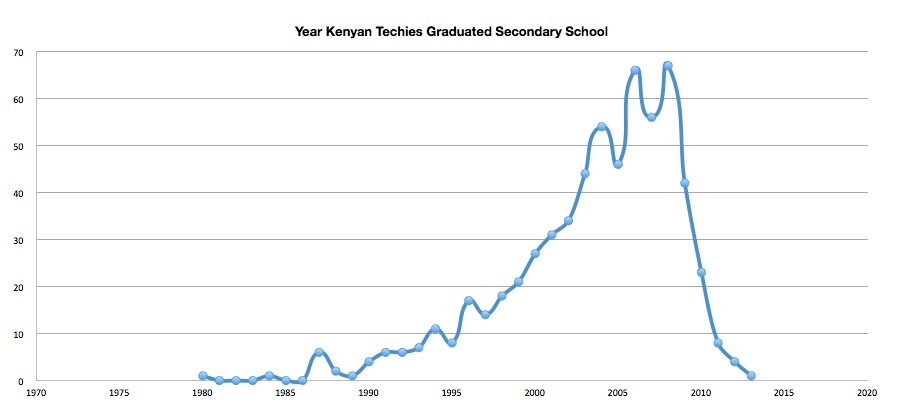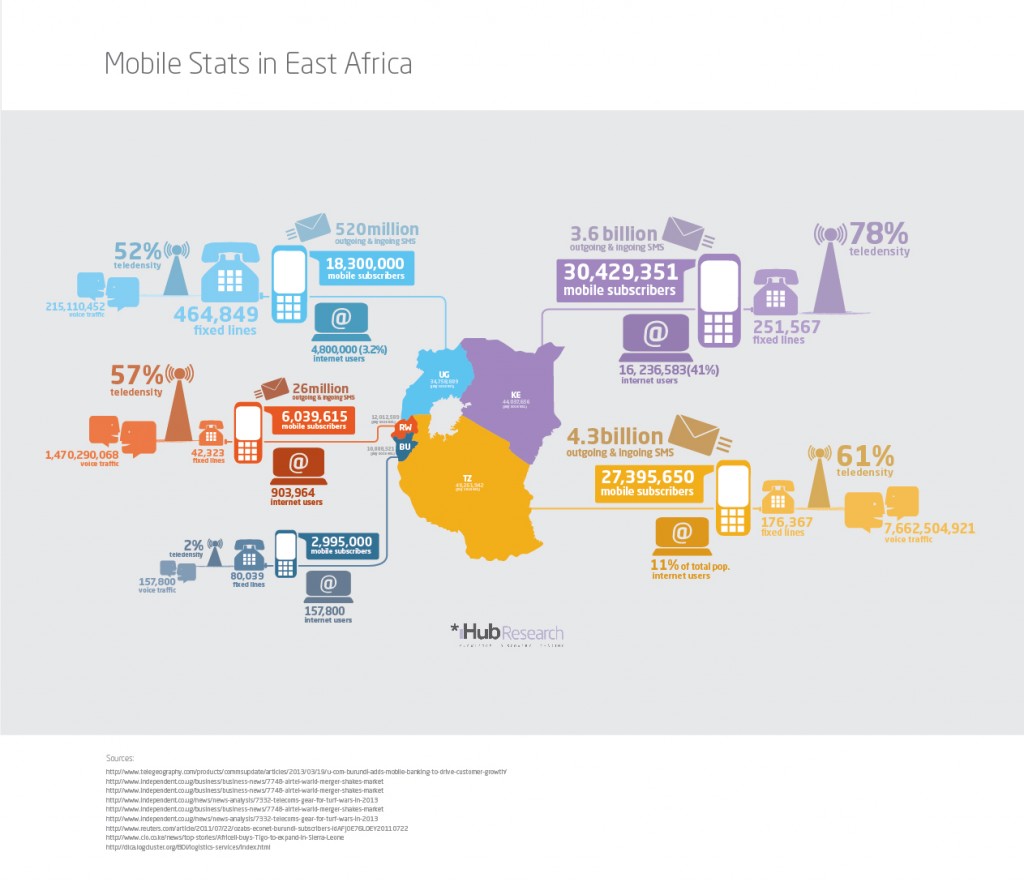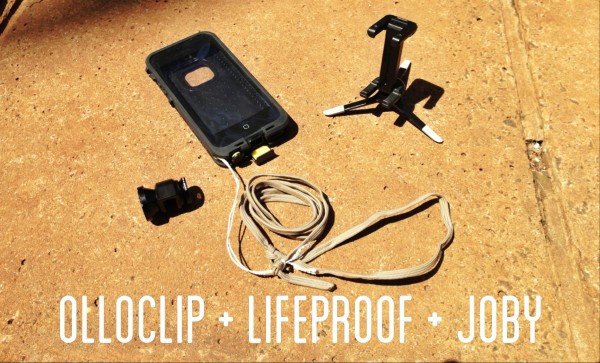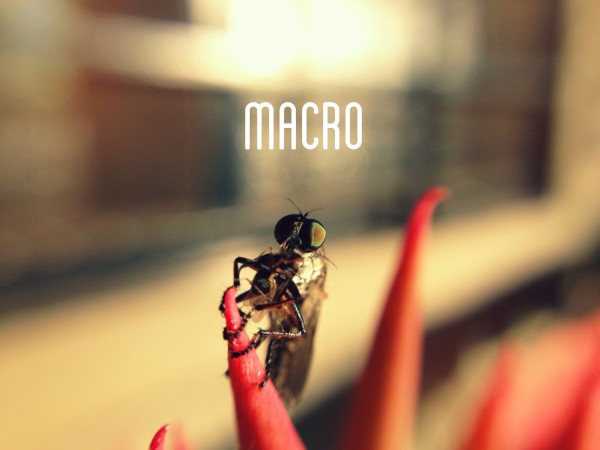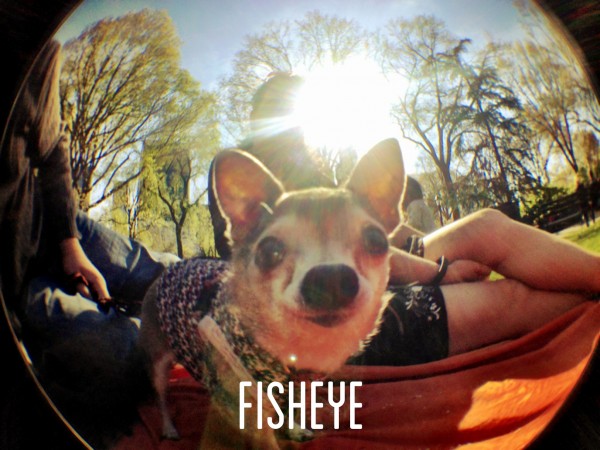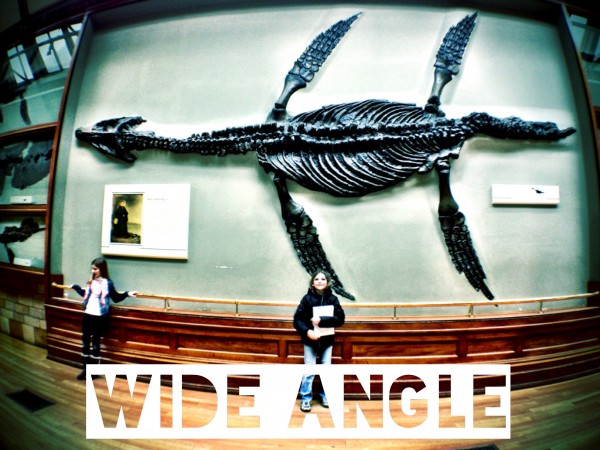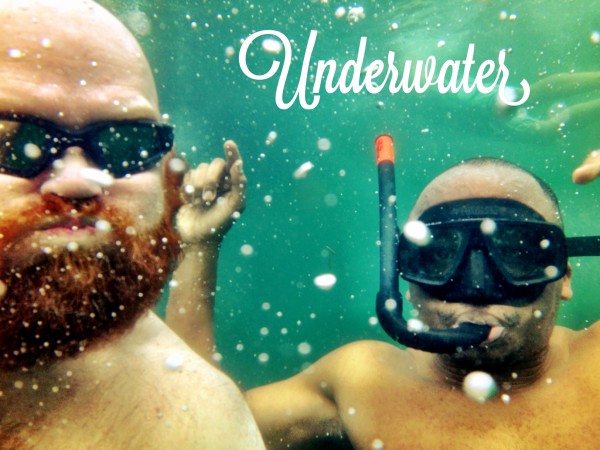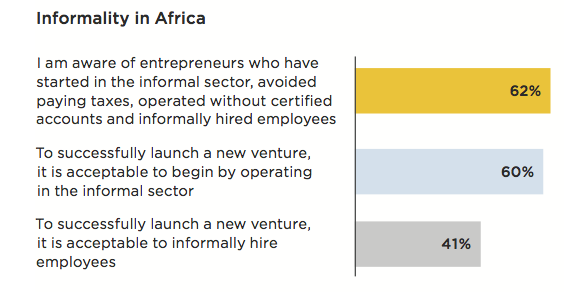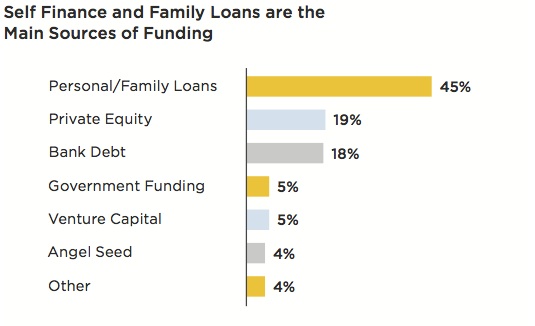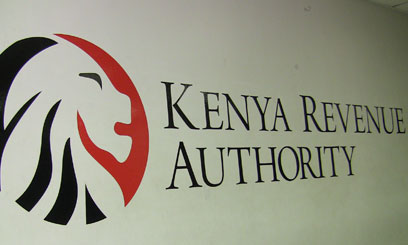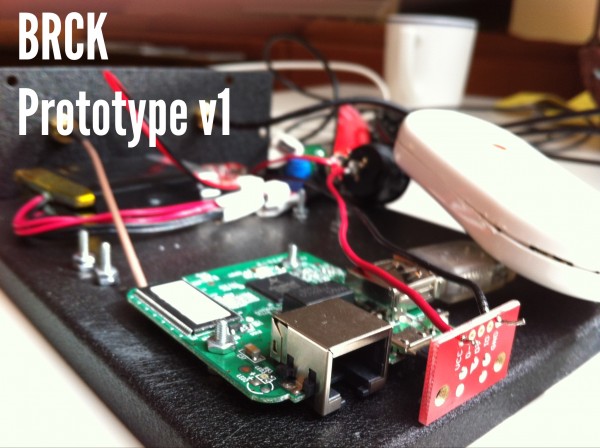It’s interesting to see where the Kenyan tech community went to school, what years we graduated, where we work and what age we first started using computers regularly. As I did in 2010, here are the survey results for 2013, with 627 responses.
The live survey link.
[Kenya Tech Community 2013 Survey Base Excel File]
What age did you first start using a computer regularly?
You can see that we tend to get on computers when we are older, at 17+ (that’s 42% of us). There’s a definite need to get more computers into classroom settings, or homes, at a younger age.
Another view of the same age chart:

- 32 People got onto computers at 8 years or younger
- 51 People got onto computers at 9-10 years old
- 62 People got onto computers at 11-12 years old
- 89 People got onto computers at 13-14 years old
- 128 People got onto computers at 15-16 years old
- 264 People got onto computers at 17 years or older
Years that the Kenyan tech community graduated from secondary school
Which schools did we graduate from?
The schools were across the spectrum. I don’t have the locations of each one, but it would be interesting for someone with the ability to pinpoint them, to do a heatmap of the country based on the school graduates from each location.
1980 – 1
1981 – 0
1982 – 0
1983 – 0
1984 – 1
1985 – 0
1986 – 0
1987 – 6
1988 – 2
1989 – 1
1990 – 4
1991 – 6
1992 – 6
1993 – 7
1994 – 11
1995 – 8
1996 – 17
1997 – 14
1998 – 18
1999 – 21
2000 – 27
2001 – 31
2002 – 34
2003 – 44
2004 – 54
2005 – 46
2006 – 66
2007 – 56
2008 – 67
2009 – 42
2010 – 23
2011 – 8
2012 – 4
2013 – 1
Here are the top 6 girls schools (I had a hard time knowing which were strictly girls schools):
- 9 Moi Girls Nairobi
- 6 Kianda Girls
- 4 Pangani Grils HS
- 4 St. George’s Girls HS
- 3 Alliance Girls HS
- 3 Limuru Girls
Here are the top 12 boys schools (I think some might be mixed, like Kabarak):
- 29 Starehe Boys
- 19 Alliance HS
- 17 Nairobi School
- 16 Mang’u HS
- 14 Lenana
- 12 Strathmore
- 10 Moi Forces Academy
- 10 Moi HS Kabarak
- 9 Friends School Kamusinga
- 9 Highway Secondary School
- 9 Kagumo HS
- 9 Upper Hill HS
Where do we work?
The short answer, is all over the Kenyan tech sector, plus many other areas of government, NGOs and private companies. By far and away, most of the people on the list were either students or freelancer/self-employed. Some of the companies that stood out were; Kenya Power, Cellulant, FrontlineSMS, MobiDev, Safaricom, IBM, Kopo Kopo, Ushahidi, Stripe and Google.
